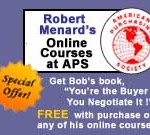 Editor’s note: Steve writes, speaks, and consults on customer service.
Editor’s note: Steve writes, speaks, and consults on customer service.
The Air Conditioning Contractors of America (ACCA) interviewed Steve Coscia about courageous service management and how service managers can become better leaders.
Are you a “courageous” service manager?
ACCA: Steve, what exactly do you mean by courageous management?
Steve: The importance of being a strong courageous manager is vital because in the absence of the strength and the courage, the front-line service employees will gravitate towards behavior that is easier for them, but not as good for the company. And a manager has to be courageous to keep front-line people adhering to the expectations of the company, and the customer.
ACCA: One of the things you mentionrd is how people act one way and expect their employees to act another way. It’s that old, “Do as I say, not as I do.” And it never really worked for our parents. So do you find that people think that this approach will be successful at work, or are they just not really even thinking about it at all?
Steve: Sometimes managers don’t think about the leadership aspect of their role and that’s a problem. They’re managers, but they’re also leaders. When a manager sits with an employee to establish expectations for the way we’re supposed to answer the phone, or the way we’re supposed to qualify a problem, and then a front-line person hears a manager answering a phone with a greeting outside those parameters, now the front-line service employee starts saying to himself, “How come I have to do it but he doesn’t?” And that creates a problem in the service environment. Now the employee is saying, He doesn’t have to do it. I do. “Why should I bother doing it when he’s not around?” And that’s what happens relevant to behavior in a service department when managers don’t follow the same expectations they create for their employees.
ACCA: We’ve all been on the receiving end of less-than-stellar customer relations. Is approaching things from the customer’s perspective always a good idea?
Steve: Yes, it is. One of the tenets for world-class service delivery is an ongoing measurement of customer satisfaction and customer expectation. So the customer has an expectation before they call and if what they experience is incongruent to that expectation, now we have a problem. And that problem in the customer’s mind makes the customer a little more difficult to deal with because the customer is wondering if the person on the other end really has the customer’s best interest at heart. So this whole concept of congruency relevant to customer expectations is a powerful force in business. What service companies should enforce is a balance, so that what customer’s expect is what the company actually delivers.
ACCA: Makes sense. Of course a lot of stuff like this, when we think about it, we say, “Oh yeah, makes sense.” But it’s not necessarily something that comes to mind when you’re actually out in the field. So what is one of the first things that a new service manager can do to start off properly maybe someone who’s never been in a leadership position before, but they’ve been promoted to one. What is the first thing that they can do to start off right?
Steve: Well, someone that has been recently promoted to service has some different aspects here. Now, if it’s someone from within the organization who used to be on the front-line, and now they got to be the manager, now they’re managing their old counterparts. So that, in itself, may have a cultural issue, and that person who gets promoted from the front-line ought to have established their sense of authority, not only in “knowing their stuff” but in their integrity. They should be a person who behaves in a way that’s true to themselves, and they have already had the respect of their previous colleagues. That should be in place first. If that is in place, the next thing I would suggest for a new manager is to re-establish the expectations of the front-line. What are the ten, fifteen or twenty things we need to be doing day in and day out to enforce the fact that we are a world-class service provider? And those things may be real simple, like the way we answer the phone, or they could be a little more complex, about how we ask questions to gather the facts we need to get the job done right the first time. But all those expectations, once they’re in place, they enable a manager to manage things on an even keel to get things done. The other thing I would suggest for a new manager, if they haven’t yet read a book called The One Minute Manager by Ken Blanchard. It’s a short book in a large 14-point font. It takes about 45 minutes to read. But it will establish the best foundation for managing people.









